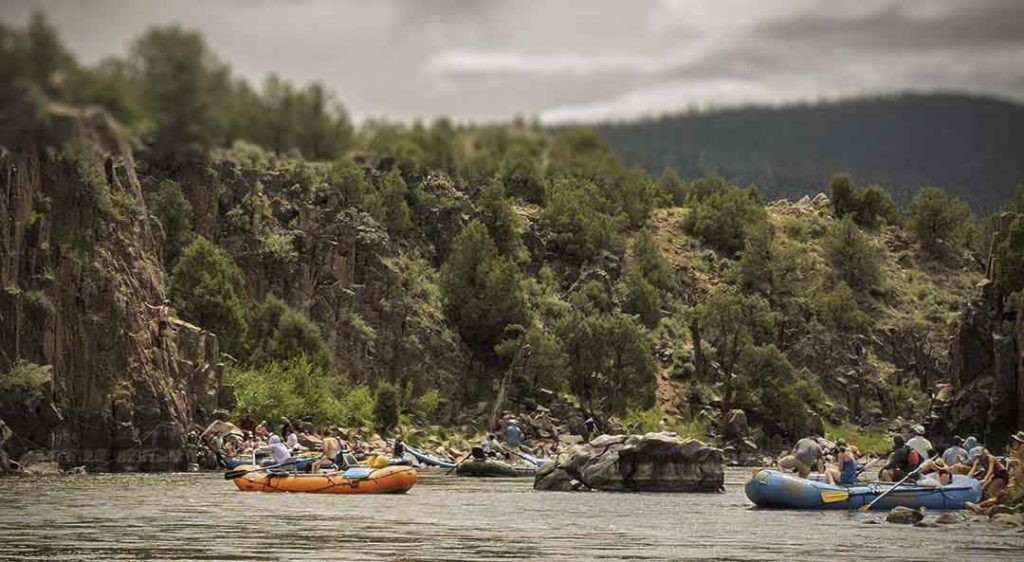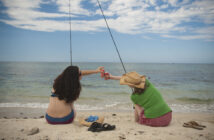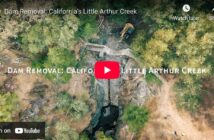
By Kirk Deeter
It’s a good news-bad news-good news-bad news deal.
Good news: As we clearly projected at the onset of the pandemic, people–especially families–have gravitated to water these past several months, and they continue to do so, in greater numbers than any of us have seen in our lifetimes. More people are fishing… license sales prove it, but the eye test on any lake or river will tell you that also. More people are buying “stuff” from dealers (when dealers can get the stuff from manufacturers). In theory, there’s a vast, newly-formed army of newbie river lovers who can potentially be consumers and stewards of the resources. All wonderful, right?
Bad news: The rivers are getting the living snot pounded out of them, everywhere, every day. One guide friend (who asked to remain anonymous) told me he was shoving off to fish with clients at 5:30 a.m, just to stake out a spot. In rural Colorado. On a weekday. In October. That’s bogus. J.P. Perizzolo, who guides the Upper Colorado said he’s seen more people raking redds recently than ever before (we’re working on a story). My friend Ray Schmidt ran a photo from the Tippy boat launch on the Manistee (Michigan) on Facebook two days ago that illustrated the “googan apocalypse” to a tee. And it’s not just fishing pressure. It’s bottles, cans, and other litter… trampled banks… abused facilities, and so on.
Good news: All you travel companies that have suffered so brutally during the pandemic… you’re gonna boom like never before. If there were such a thing as a “fly fishing travel stock” I’d be buying it now. Because most genuinely dedicated fly anglers in this country are so disgusted by some of what they’ve seen recently that they’re spending long hours now dreaming and planning ways to get as far away from American rivers as humanly possible, as soon as they feel safe to do so.
Bad news: There might not be as many truly “dedicated” fly anglers on the other side of this if we don’t pay attention and collectively try to manage for the long run. I’m starting to see too many people say, “screw this” on social media and otherwise. And I can tell you that “more, merely for the sake of more,” will crush this sport under its own weight. Your cash register might ring, but if you’re just plowing ahead without focusing on teaching real skills, and instilling ethics… well, you’re running 100 m.p.h. down a dead-end street. And the dealers and manufacturers who have been around the block long enough are acutely aware of that.
It’s time for all of us to tune in and act. But who’s going to step up?
The American Fly Fishing Trade Association? Sadly, the organization has been hurt without a trade show. But there’s still vision and resolve there. The organization can play a vital role in managing the future of fly fishing… with as much or more effect than “promoting” a sport that seems to be promoting itself now.
Trout Unlimited? Bonefish and Tarpon Trust? Well, one can clearly argue that the need for clean water to fish in has never been greater. “Take care of the fish and the fishing will take care of itself,” is what Art Neumann, a TU founder, said many years ago. But I’m not sure that’s true anymore. I think we also need to be thinking about the fishing, and how that takes place or the fish won’t fare so well—in rivers, lakes, or even oceans.
Backcountry Hunters and Anglers? Jeez, if there were ever a case for the need to protect and even expand public access to lands and waters, and if ever there were a case to be made for just how stupid the notion of divesting in public lands would be… you’re seeing it unfold in real time now. All of us should support BHA to drive a stake through the heart of this vampire, right now.
Fly Fishers International? It’s cool to promote the culture and herald the artistry of fly fishing. But beyond teaching people how to teach other people to form tight loops and make pretty casts, there’s a real opportunity here to be a leading force in promoting ethics, and respect for other anglers as well as fish and the environment as the absolute foundation of the sport.
Manufacturers? If this discussion about how to manage the influx of people on water is not part of your long-term strategic planning right now, you are putting yourselves—and your dealers—at serious risk.
Retailers and guides? I said it before and I will say it again: now is your chance to prove your roles as truly valuable “influencers” and gatekeepers, and remain relevant in the market mix. If you don’t truly “influence,” some hotshot with two years’ experience and an Instagram account will.
Ultimately, the correct answer to the question of “who is going to step up?” should, in fact, be “all of us.” Everyone.
We are eager, ready and willing to listen to ideas. Please help and chime in.




3 Comments
Your topic is multilayered. It is not just anglers but water recreation as a whole has seen an increase in participation.
As a longtime professional guide on the water you reference it shames me to see guides in the middle of summer with nymph rigs. We are guides. Fly fishing guides and all too often we fall short in the teaching department during a day on the water. Fly guides should be exercising the prime aspect that attracts anglers to our game, dry fly fishing. Any guide can plunk a client in a recirculating eddy and catch fish on nymphs. That is a numbers game. But are you teaching them fine mending skills, specialized casts or targeting fish specifically on the surface? Is there a discussion of angling ethics during your day. Are you just selling fish or an Experience? The fish can be in lower numbers when dry fly fishing than nymph fishing however my clients revel in the visual interaction you get from dry fly fishing and remember with greater detail the experience.
We will see more people continue to recreate on the water. How will our industry embrace the challenge?
IMO, too many guides focus solely on numbers and size of fish and totally ignore the amazing places these fish live.
I was on the Yampa tailwater on Wed, last day of elk first rifle season. Usually hunting season is a good time to fish, not anymore.. parking lot was full. Luckily the parking lot is small so everyone got a pool, but those were some jaded-looking fish. I left to fish the surf on Stagecoach res, not very productive but gave the tailwater fish a break from one angler at least.
Earlier this year, the S. Platte was low, advisory from CPW was to not fish so as to avoid stress on the fish. I drove past on my way to fish a reservoir, stream was basically lined with fisherfolk, every pool and run occupied.
The crowds even affected carp fishing. At Chatfield reservoir there wasn’t an empty hundred yards of shoreline on any summer day. So the carp never came in shallow, and the fly-fishing opportunities disappeared.
So yes, poor old fish/rivers are surely getting the snot pounded out of them..
I can’t see travel is any kind of solution. Many of us can’t afford those expensive overseas trips. Also the word from the various forums and friends overseas, is that their fish/rivers are taking it in the shorts, just like ours.
In a way this is similar to the hunting problem. CPW depends on hunting (and fishing) licenses revenue, to manage the resource. Hunter numbers are dropping steadily, while crowding in hunt season increases steadily too. This apparent paradox is easily resolved – no-one is building new elk forests, just as no-one is making new trout streams. New condos, new private ranching fences, yes. This elk rifle season – from the edge of Routt National Forest to the end of the road, an elk camp in every turnout. Four inches of snow on the road had been driven flat in less than a day. It’s become too much for me. I’ll continue to buy an elk license to support the CPW but won’t go hunt anymore, not much fun in the crowds.
I think often of the Richard Brautigan short story where he finds sections of trout stream stacked up in the hardware store, available on easy purchase terms. If only trout streams were priced into the capitalist economy..